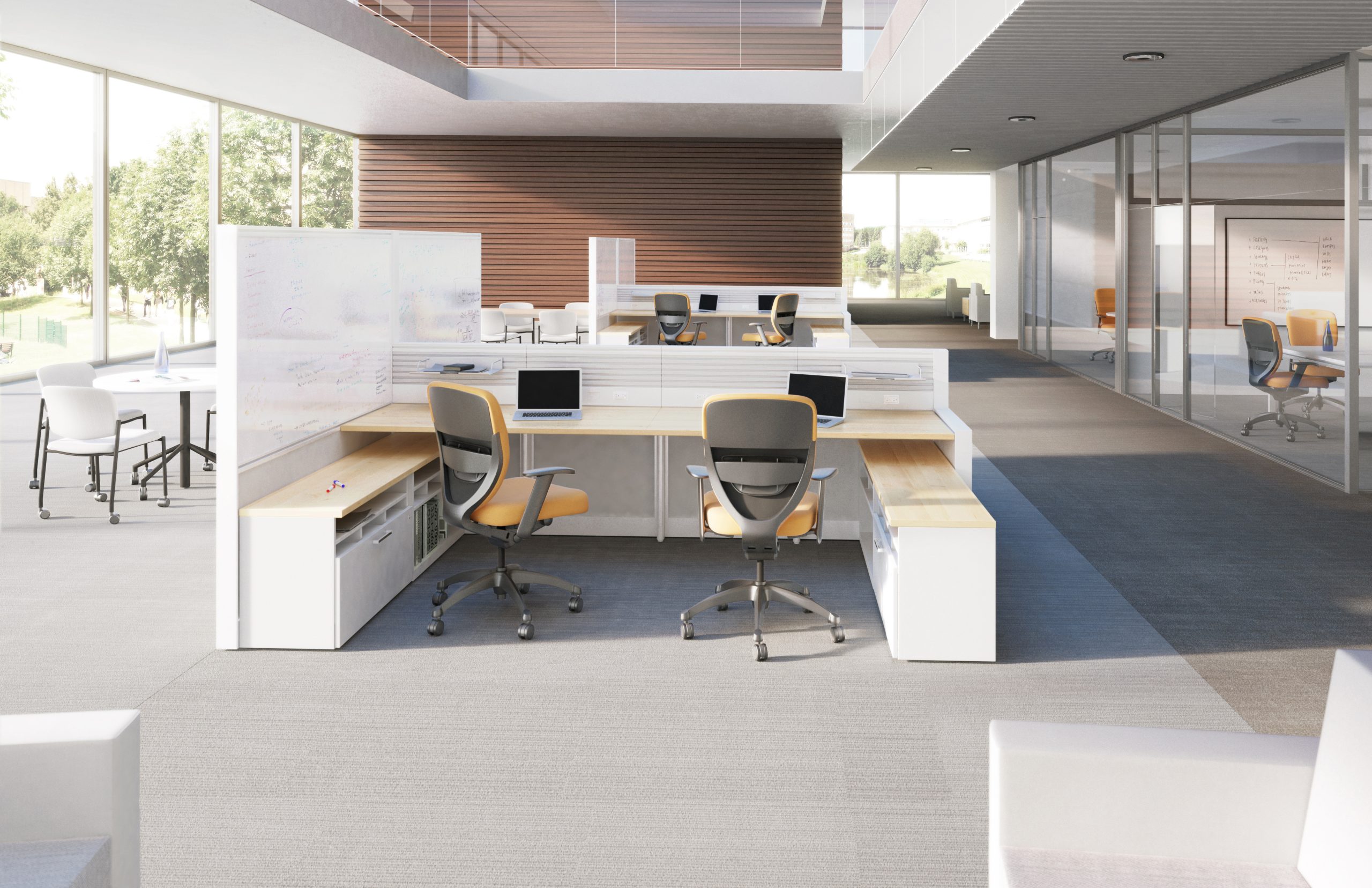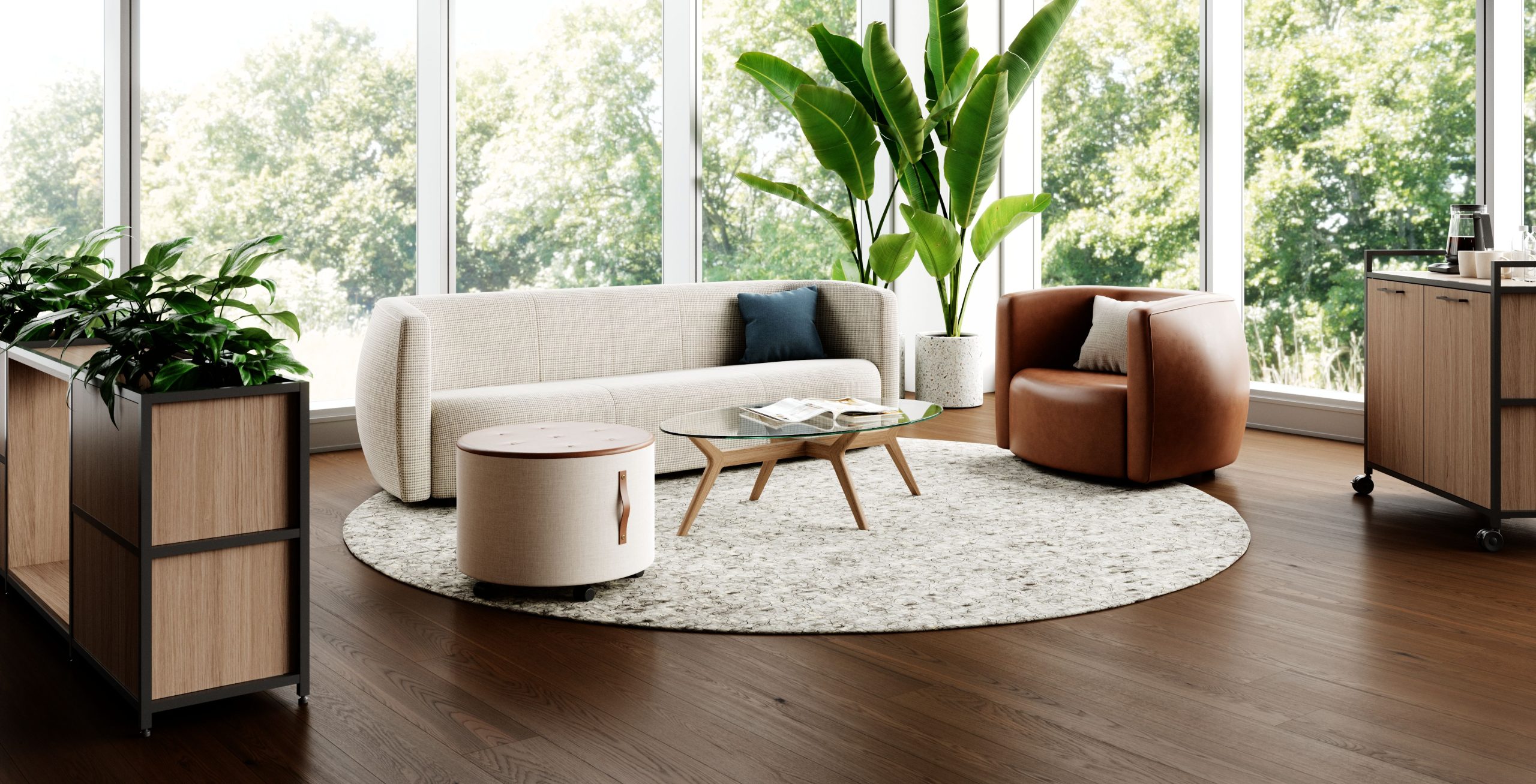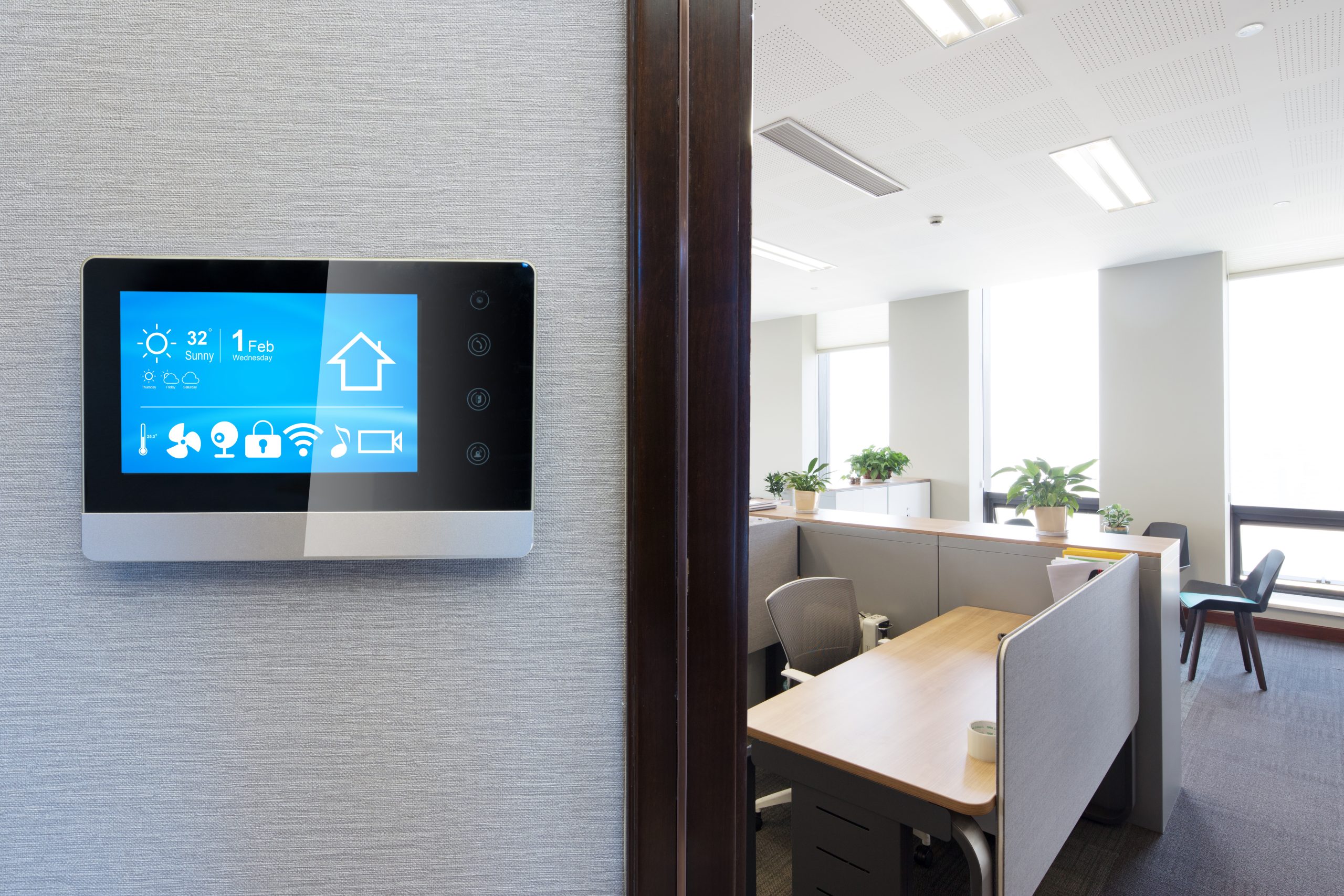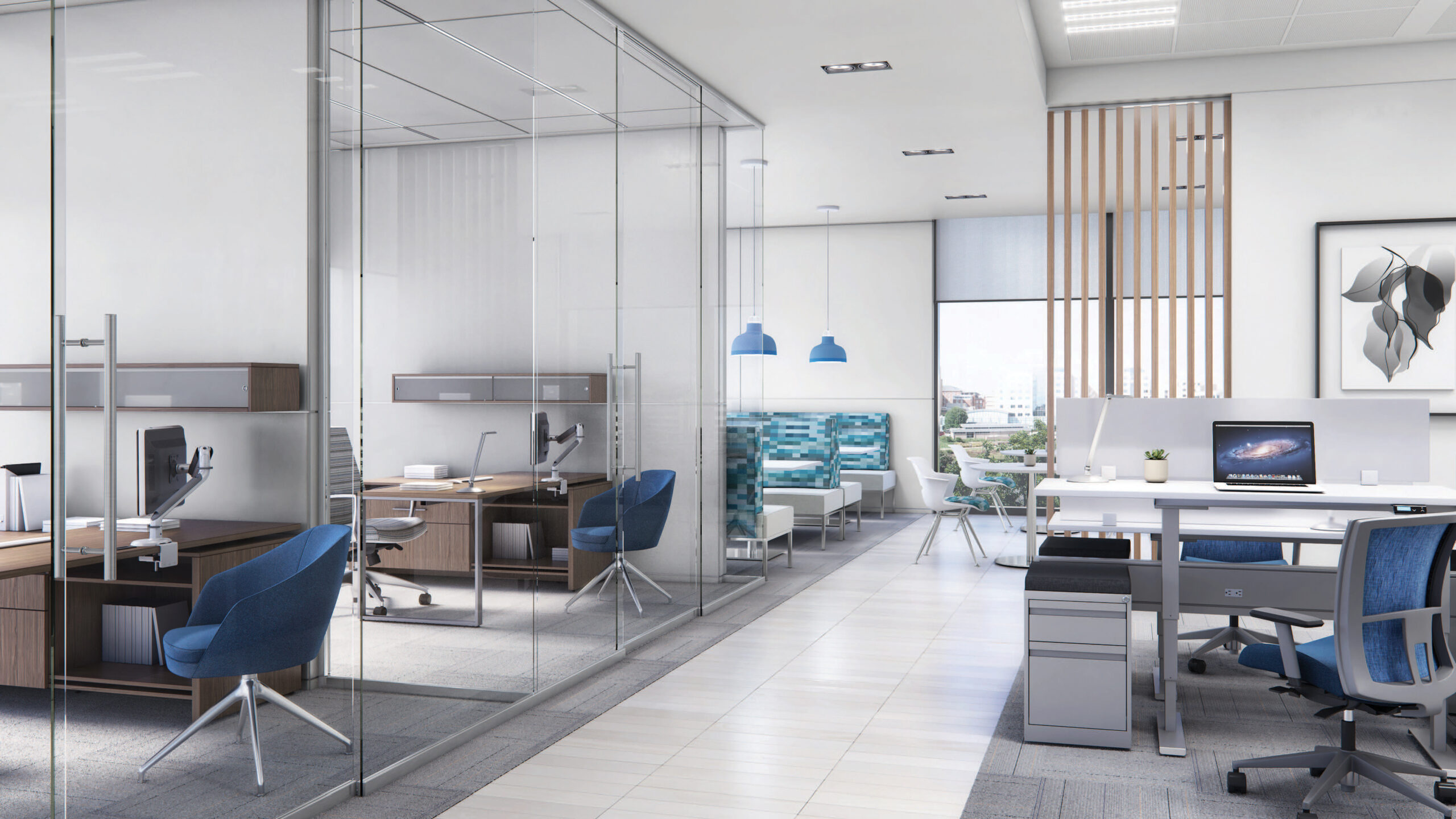As we navigate the ever-changing workplace environment of 2024, Kaelynn Reid, Kimball International’s Certified Design Futurist, offers insights into the office furniture trends of 2030. Here’s what’s predicted to shape functional, stylish workspaces in the future:
1. Harmonizing Spaces for Enhanced Connection
As the lines between different work environments blur, furniture designs are increasingly focusing on versatility and aesthetic appeal. These future designs will not be confined to specific sectors, but will transcend traditional boundaries, embracing materials that are both durable and beautiful. Designers are encouraged to master universal design principles that support multifunctional spaces, particularly in mixed-use buildings that cater to various industries.

2. Combining Physical and Digital Work Environments
The future of workspace design lies in the seamless integration of physical and digital realms, creating “phygital” (physical and digital) environments that enhance user interaction and brand expression. As technology advances, designers have the opportunity to incorporate augmented reality (AR) and digital twin technologies into physical spaces. This convergence enables the creation of dynamic and interactive work environments that reflect and amplify the cultural identity of businesses, making physical spaces more valuable and accessible.

3. Prioritizing Privacy
As office spaces become increasingly integrated with sensor-driven technologies, users will enjoy unprecedented control over their environment, enhancing inclusivity and personalization and redefining the user experience. This will also place a significant emphasis on the ethical management of data: Designers and manufacturers must champion transparent and secure data practices to protect privacy and ensure that the integration of these technologies aligns with stringent security standards.

4. Subscription-Based Flexibility
The future of office furnishings may see a surge in subscription-based services, reshaping traditional buying patterns into flexible, ongoing engagements. These models cater to the increasing demand for customization and flexibility, allowing businesses to update or change their furniture based on current needs without the permanence of outright purchases. This shift could deepen client relationships into more sustained partnerships and offer companies agile solutions to adapt their workspaces as required, promoting a dynamic approach to office design and utility.

5. Interactive Smart Furniture
Future furniture will interact with its environment and the user, offering health monitoring, adjusting ambient conditions, and even purifying the air around you, thus actively contributing to a healthier workplace. This smart furniture will be more than just a passive part of the office; it will be a dynamic component of your daily work life, enhancing comfort and well-being.

As we look forward, the role of furniture in the office is set to shift dramatically, with each piece playing a proactive role in shaping our workdays. These forward-thinking trends will revolutionize how we think about office furniture, turning everyday items into interactive, adaptable, and health-enhancing elements of the workplace.
At HiTouch Business Services, we’re excited to partner with industry leaders like Kimball International to bring these innovative contract furniture solutions to our clients. We’re here to help you navigate the future of workplace furniture, tailoring our offerings to meet the unique needs of your business with expert guidance every step of the way.
Explore HiTouch Business Services Contract Furniture Solutions and prepare your workplace for the future today.





